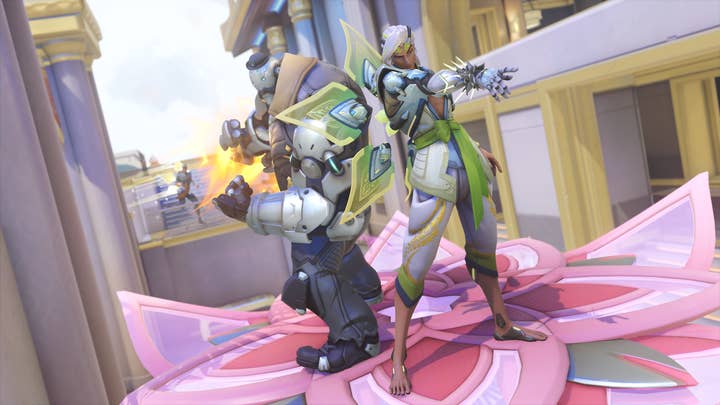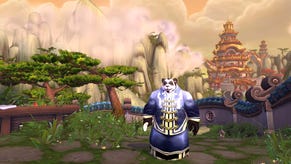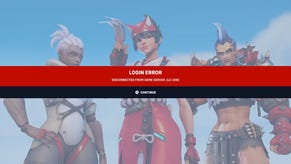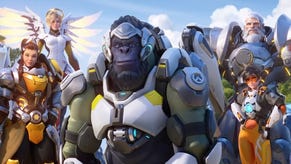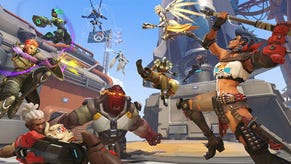Will players tolerate Overwatch 2’s broken promises? | Opinion
By cancelling much of the sequel’s new content, and with other F2P options a click away, Blizzard’s choice is a huge risk
Sign up for the GI Daily here to get the biggest news straight to your inbox
Last year, Blizzard attempted one of the most interesting and risky experiments we've ever seen a game do to its business model.
The studio’s online squad-based shooter, Overwatch, was generally very well-liked, with a devoted core fanbase – but it had launched as a $60 game and consequently had both a relatively high bar to entry compared to competing games like EA’s Apex Legends, and some hard limits on the types of monetisation strategies it could employ.
Blizzard’s attempt to cut this gordian knot was to soft-relaunch the game as Overwatch 2 – declaring that the original game had run its course, and bringing out a free-to-play sequel with a battle pass and skin store monetisation system.
Up front, the move felt a bit cynical – the actual differences between Overwatch and Overwatch 2 at launch were more in line with a patch than a sequel – but much was promised down the line, with the game’s shift to an F2P model intended to open it up to a much wider addressable audience and allow for development of entirely new content types, including an expansive PvE element that would draw upon Blizzard’s depth of experience in this field, featuring story missions, character skill trees and upgrade paths, and large-scale raids.
The response to this unusual "sequel for business purposes" approach has been mixed, to put it charitably. On one hand, it has definitely achieved its aim of opening the door to new players – Blizzard’s diagnosis that the up-front payment model was limiting the audience and holding back the game from competing effectively with rival titles was entirely correct.
On the other hand, the team’s lack of experience with F2P and battle pass style models has been painfully apparent, often in ways that have infuriated and alienated the game’s long-term players.
Character skins are priced at eye-watering levels – there are regularly bundles in the in-game store which are priced more expensively than actual outfits of actual clothing you can buy in actual shops to put on your actual body – and the game is astonishingly stingy with its premium currency, doling out only a few dozen coins to players who grind through all of its time-sink weekly challenges, meaning that you’d need to do this for six months to afford even a mid-range skin.
The battle pass, while reasonably priced, is padded out with filler items that are of little or no interest to players, and includes new skins and cosmetics for only a minority of the game’s characters, meaning a player can often find no skins at all for their preferred characters in the pass.
Most controversially, new hero characters that are introduced are locked up behind the battle pass system. Those who pay can use them immediately, while those who don’t have to grind for weeks or months to get access to the new heroes and their game-changing abilities.
There have, of course, been other criticisms along the line from the game’s community – some of which, admittedly, are largely resistance to change from players who miss aspects of the original Overwatch (though quite a few of those things have actually been restored in patches and updates, suggesting a tacit acknowledgement that some of the changes made to create the impression of being a genuine sequel were actually missteps).
Other critiques are much more valid – my personal bugbear has been the constant shoehorning in of free-for-all deathmatch special event modes in a game whose characters and levels feel quite explicitly not designed for that style of play – but these are arguably less interesting than the issues around the business model.
I can’t overstate the extent to which interest and excitement for what would be possible in the PvE content has helped to smooth over rough patches for Overwatch 2
Every service game has a back-and-forth between its developers and its community over how the game is being run and what choices are being made in its design. Overwatch 2 has misstepped in these regards a few times, but I don’t think it’s been any more egregious than the missteps other similar games have made at various points.
In the case of Overwatch 2, however, the whole edifice has been supported to some degree by anticipation for all of the new content that was coming down the line. None of the PvE content arrived at launch, but plenty of information had been released about it in the run-up to the arrival of the sequel, and following the launch players were regularly promised that updates about the PvE experience would be coming soon.
I can’t overstate the extent to which interest and excitement for what would be possible in the PvE content has helped to smooth over rough patches for Overwatch 2; how many times criticism or upset about the current state of the game or its monetisation has been blunted by being followed up with a statement to the effect of, "I’m still really excited to see what happens with the PvE modes."
For many players, especially those who were players of the original Overwatch, the PvE content was the actual justification for the existence of Overwatch 2. Players don’t give a tuppenny damn about your need to overhaul your business model – that’s very much a you problem, not a them problem – so the actual reason for Overwatch 2 coming to pass, namely the business model shift, was never valid or relevant to them. The addition of extensive PvE content made this a valid sequel from a player perspective; absent that content, it was only a valid sequel from the perspective of the company’s accountants.
This week, the other shoe finally dropped. After months of pushing back promised updates about the state of the PvE content, we finally know what the state is – it’s not happening. Almost all of what was originally promised in terms of PvE content has been ditched entirely, with some remaining aspects set to be folded into the various PvP seasons in the form of isolated events like story missions.
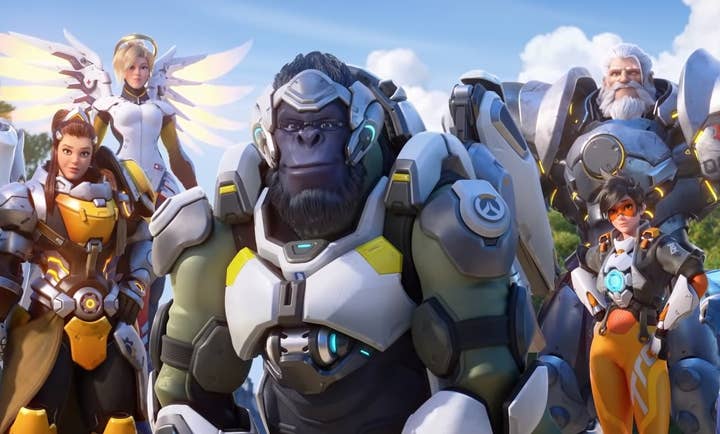
The game’s storyline, which had originally been planned to be expounded and developed as part of an ongoing narrative through PvE content updates, now seems set to be dumped into a bunch of text files as a "lore archive" in the game, which almost feels like insult to injury to those players who had been looking forward to this aspect.
Blizzard claims that work on the PvE elements was pulling away too many resources from the core PvP game – the implicit promise here being that by dropping work on PvE, the quality and quantity of PvP seasonal content will be massively enhanced, which is the kind of pledge that feels depressingly likely to end up being thrown back in Blizzard’s face for years to come.
That’s assuming that Overwatch 2 is around for years to come, of course, since it’s fair to speculate about whether this would have happened if the relaunched game was hitting its commercial targets.
Now, it’s certainly possible that Overwatch 2 is making money hand over fist [editor's note: it seems to be], and we’re just seeing some classic MBA-think at work slicing and dicing the goose that lays the golden eggs – unable to comprehend that cutting costs on future development work is effectively signing a death warrant for your product in the medium term.
We all know that consoles sell to early adopters on the promise of games that don’t exist yet; with service games, that’s also the case
That would also square with murmurings about the Overwatch team being far less protected from meddling from above since the departure of the game’s original director, Jeff Kaplan, in 2021. On the other hand, it’s also possible that Overwatch 2 isn’t matching commercial expectations – either because the F2P shift hasn’t opened up acquisition to the extent that was expected (wrecking word-of-mouth by repeatedly alienating so much of the original game community probably wasn’t an ideal move in that regard), or because retention and monetisation aren’t working as efficiently as hoped, or all of the above.
If I had to place a bet, I’d wager that Overwatch 2 has seen a significant downside in retention in return for their far higher acquisition rate for new players. That quite likely translated to higher revenues at the outset, but it has made the game commercially unstable – dinging your retention metrics means that if acquisition slows down, you end up deflating like an old balloon.
Which of those scenarios is accurate, however, isn’t all that relevant. It’s important in terms of understanding the decision space in which Blizzard was operating, but the impact of that decision will be the same regardless – from the player perspective, the fig-leaf has been ripped away from the commercial decision to turn a balance patch into a sequel, and the engine of goodwill that was the anticipation for major new PvE content has stuttered to a halt.
You could argue, of course, that dropping features that don’t exist yet should make no difference to the playerbase, but that has never been how things work in the video games market, where anticipation of future developments is the primary driver of goodwill for a product or platform. We all know that consoles sell to early adopters on the promise of games that don’t exist yet; with service games, that’s also the case.
Players enjoy the existing game more because of their anticipation of what’s coming down the line. Perhaps more relevantly, they tolerate flaws and issues more because they’re looking forward to what will be possible eventually. Perhaps most importantly of all to an F2P game like Overwatch 2, players also assess the value of their expenditure on the game based on anticipation of future enjoyment. Their willingness to pay money for skins and battle passes is conditioned upon their notion of how much value they’ll get out of those things in content as-yet unreleased.
If this were a monolithic paid-purchase game that was seeing an expansion pack cancelled, that would be an entirely different story – you still own the game you paid for – but in a service game, the cancellation of promised future content is a huge blow to the relationship players have with the game.
How much goodwill can a popular game retain after the developer reneges on its biggest promises for future content?
Look at an enormously successful service game like Genshin Impact, which has a public roadmap of the various major new areas (entire countries currently inaccessible on the world map) that will open up in future. If developer Hoyolab were to announce that they’re actually stopping work on a bunch of those countries, it would almost certainly have an immediate effect on the game’s revenues, since the value of owning in-game items would be instantly diminished by the fact that the scope for the use of those items has been reduced so significantly.
Overwatch 2 has just opened itself up to the same issue. Last week, you could buy the game’s skins on the assumption that you’d be able to show them off while running hours of PvE raids and story content with your friends down the line. Today, those skins only have value in the game’s existing PvP modes. The scope of their usage has shrunk significantly, and players’ perception of their value will shrink accordingly.
From a commercial, business analysis perspective, Overwatch 2 continues to be an extremely interesting and educational experiment – but admiration for the audacity of trying to shift the business model for a successful game in mid-flow has shifted to something more like a car crash rubber-necking fascination at how badly the ball has been dropped in the subsequent months.
This week’s announcement is, in a sense, yet another grand experiment; how much goodwill can a popular game retain after the developer reneges on its biggest promises for future content? It’s not like this is a case of "we’ve got your money already, we can do what we like," since in about a month’s time Blizzard will be returning to its entire playerbase, cap in hand, asking for them to buy another battle pass.
Perhaps their grand gamble will pay off, and players will forgive the dropping of the sequel’s biggest promises quite easily – but it seems much more likely that we just witnessed an unforced error that will cause a collapse in goodwill that is not easily clawed back.
Sign up for the GI Daily here to get the biggest news straight to your inbox
